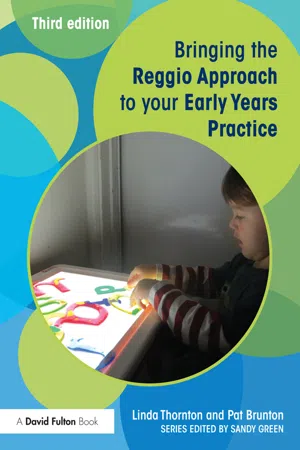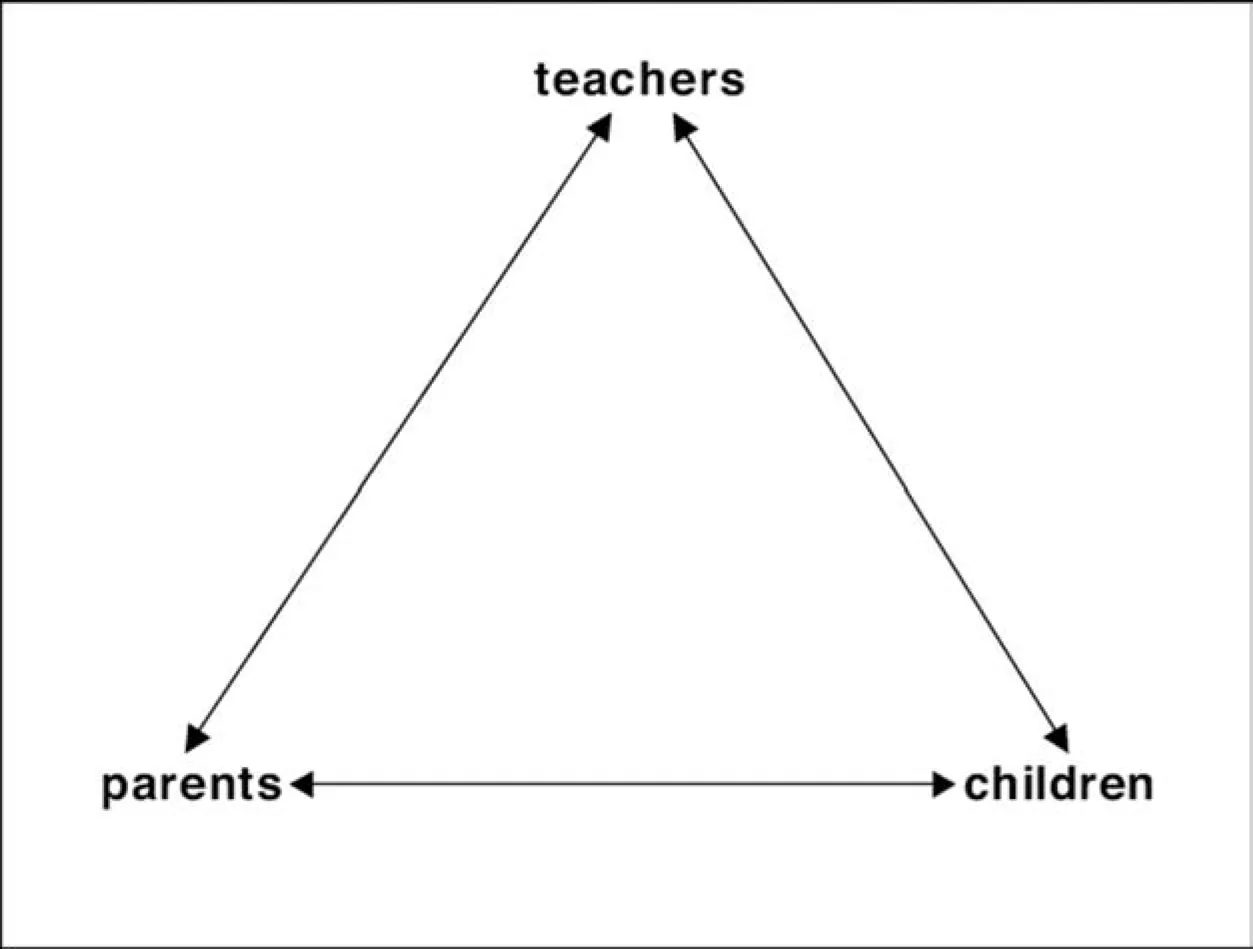
- 120 pages
- English
- ePUB (mobile friendly)
- Available on iOS & Android
Bringing the Reggio Approach to your Early Years Practice
About this book
Have you ever wondered what the Reggio Approach is all about, why it works, and how it can be used to benefit the young children in your setting?
The book describes how educators in Reggio Emilia work with young children, and looks at the connections between the Reggio Approach and the revised Early Years Foundation Stage framework. It provides practical examples involving children of different ages in a wide variety of settings, helping the reader to see the connection between practice and theory.
This new edition has been fully updated to show the increasingly mirroring connections between the Reggio Approach and the principles and commitments of the recently revised Early Years Foundation Stage (EYFS) framework. Each chapter focuses on one important aspect of the Reggio Approach and includes:
- Practical examples involving children of different ages in a wide variety of settings, helping the reader to see the connection between practice and theory
- Questions to enable the reader to reflect on and develop his or her own practice in accordance with new statutory requirements
- References to sources of further reading and information.
This convenient guide will help early years practitioners, students and parents to really understand what the Reggio Approach can offer their setting and children.
Frequently asked questions
- Essential is ideal for learners and professionals who enjoy exploring a wide range of subjects. Access the Essential Library with 800,000+ trusted titles and best-sellers across business, personal growth, and the humanities. Includes unlimited reading time and Standard Read Aloud voice.
- Complete: Perfect for advanced learners and researchers needing full, unrestricted access. Unlock 1.4M+ books across hundreds of subjects, including academic and specialized titles. The Complete Plan also includes advanced features like Premium Read Aloud and Research Assistant.
Please note we cannot support devices running on iOS 13 and Android 7 or earlier. Learn more about using the app.
Information
1 Background to the Reggio Approach
History

Influences

Organisation
Staff roles
Teacher
Atelierista
Pedagogista
The key values of the Reggio Approach
- Relationships
- Creativity
- The environment
- Time
- Learning and teaching
- Reflective practice.
Further reading
- Barazzoni, R. (2000) Brick by Brick. The History of the ‘XXV Aprile’ People’s Nursery School of Villa Cella. (English Edition). Italy: Reggio Children.
- A description of the early days of the first preschool, started on Liberation Day in 1945, through to the present day. A description of the historical, political and social influences which have helped to shape the Reggio experience.
- Baldini, R., Cavallini, I. and Vecchi, V. (2012) One City, Many Children: Reggio Emilia, a History of the Present. (English Edition Editor: Peter Moss). Italy: Reggio Children.
- The story of the creation and development of the preschools and infant-toddler centres from the perspective of the key protagonists.
- Thornton, L. and Brunton, P. (2014) Understanding the Reggio Approach, 3rd edition. London: David Fulton Publishers.
- An overview of the Reggio Approach which analyses the essential elements of the Reggio Approach and provides examples from the infant-toddler centres and preschools. This is an ideal text for practitioners wishing to extend their understanding of how young children’s learning is supported and developed in Reggio Emilia.
- Edwards, C. P., Gandini, L. and Forman, G. (eds) (2012) The Hundred Languages of Children: The Reggio Emilia Experience in Transformation, 3rd edition. Westport, CT: Albex Publishing.
- A collection of interviews with pedagogistas, atelieristas, teachers and administrators from Reggio Emilia, who describe their roles in their own words. This book also contains the transcript of an extended interview with Loris Malaguzzi in which he talks eloquently about the work of the preschools and infant-toddler centres, explaining why things are as they are. Essays and research papers from educators in North America describe how they have been touched by the ‘Reggio experience’.
- Everyday Utopias (DVD) (2011) Italian dialogue with English subtitles.
- A video capturing children’s and adults’ experiences during a day in the life at an infant-toddler centre and a preschool.
2 Relationships
In the Reggio Approach
A powerful image of the child
Two-way relationships

Table of contents
- Cover Page
- Half Title Page
- Title Page
- Copyright Page
- Contents
- Acknowledgements
- Introduction
- 1 Background to the Reggio Approach
- 2 Relationships
- 3 Creativity
- 4 The environment
- 5 Time
- 6 Learning and teaching
- 7 Reflective practice
- Conclusion
- Useful contacts